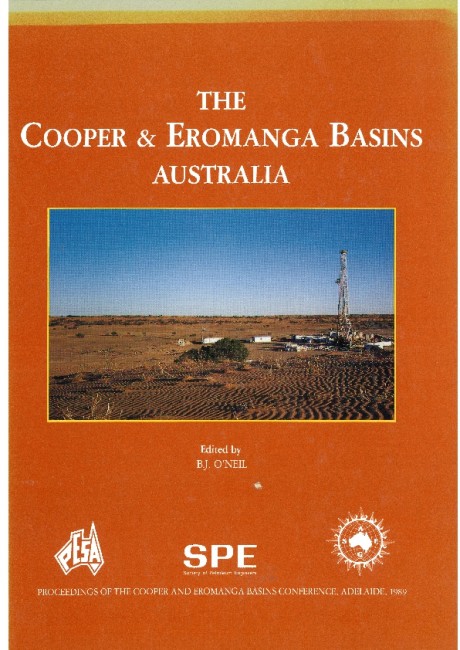Publication Name: The Cooper & Eromanga Basins Australia
Authors: D.I. Gravestock and E.M. Alexander
Date Published: June 1989
Number of Pages: 25
Reference Type: Book Section
Abstract:
Calculation of water saturation (Sw) in oil reservoirs requires accurate input of porosity, matrix (clay) propertiesand formation brine resistivity. Shale volume and cation exchange models have evolved to account for clay volume and conductivity in shaly sands. In the Eromanga Basin, elevated temperature and high formation water resistivity combine to increase the relarive importance of clay conducrivity even in conventionally 'clean' sands, and major correcrion is required for shaly sands. Calculated Sw differs between equations representing each model ('Indonesia', Waxman-Smits) this difference ascribed here to the way in which clay volume is determined from downhole logs. Shaly sand cementation and saturation exponents are close to 2.0, but small departures from this value are minor compared with errors arising from inaccurate measurement of clay volume and brine resistivity. Cation exchange capacity (CEC) in the kaolinite dominated Eromanga reservoirs is an exponential function of the difference between neutron and total porosity, but accuracy of the correlation decreases as core measured total porosity is replaced by porosity from the density and sonic logs. Normalised shale volume cannot be calculated by linear interpolation between maximum and minimum gamma ray values. Furthermore the gamma ray log by itself cannot differentiate 'hot' sands from shaly sands. The gamma ray log requires calibration against other clay indicators (neutron-density, CEC) to be of any use in Eromanga reservoirs. Selection of suitable matrix properties (density, transit time) is the chief factor affecting core-log porosity correlation, with the density method yielding generally better results. A gamma ray-based empirical formula provides fair sonic porosity where poor hole conditions render the preferred density-neutron combination unusable. Investigations of the gamma ray response are continuing.


